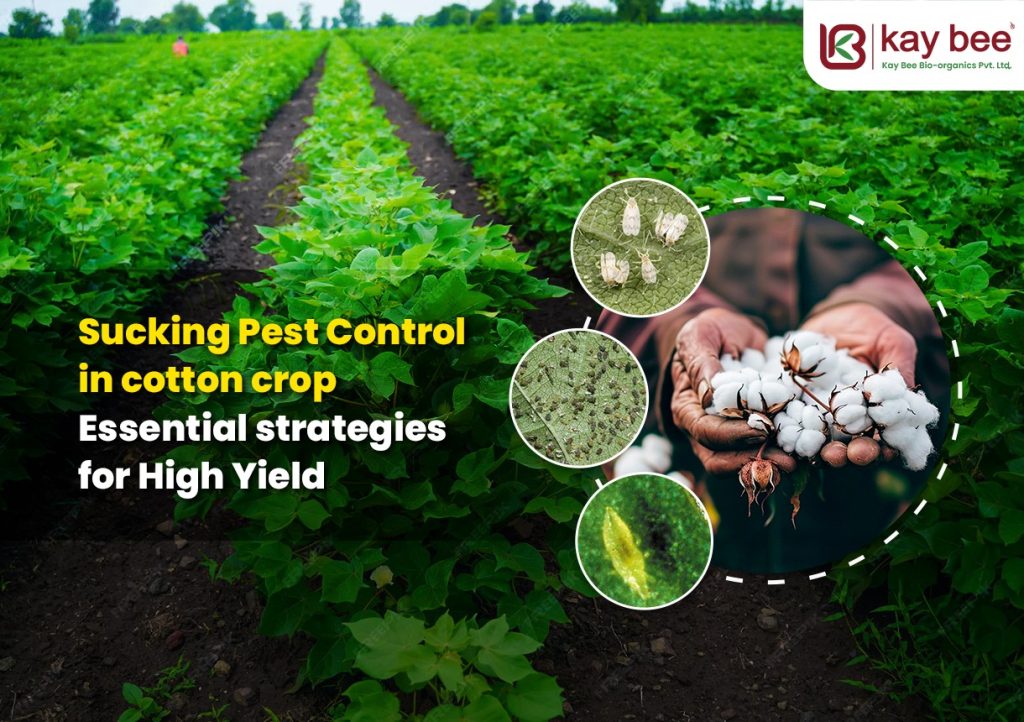The Importance of Crop Rotation in Pest Management for Beginners

Understanding Crop Rotation as a Tool for Pest Management
Cultivating a successful garden or farm is not just about choosing the right seeds—it’s also about strategy. One of the most effective agricultural practices is crop rotation, which plays a crucial role in managing pests. By alternating the types of crops grown in a specific area, gardeners and farmers can disrupt the life cycles of pests, leading to healthier plants and increased productivity.
Crop rotation has been utilized for centuries, but its importance has become even more pronounced in modern farming due to the escalation of pest resistance to pesticides. This practice can be pivotal in sustainable agriculture, offering a natural, eco-friendly way to combat pest populations. Let’s explore the key benefits of implementing a crop rotation strategy:
- Diversity in Planting: Growing a variety of crops can confuse and deter pests that are specialized in targeting specific plants. For instance, if a farmer alternates between corn and soybeans, it can reduce the buildup of pests like the European Corn Borer, which thrives on corn alone. By diversifying, the farmer ensures that pests do not become a recurring problem in any given year.
- Nutrient Management: Different crops have varying nutrient requirements and use different root depths, which means that rotating crops can enhance soil structure and fertility. For example, legumes such as clover or beans are known for their ability to fix nitrogen in the soil. After a leguminous crop, planting a nitrogen-hungry crop like corn can lead to healthier plants and improved yields.
- Pest Lifecycle Disruption: Many pests have specific life cycles that are closely dependent on the crops they infest. For example, the life cycle of the root-knot nematode is disrupted when the host crops are replaced with non-host plants. By changing what is grown seasonally, pests are less likely to find suitable conditions for reproduction, effectively breaking their lifecycle.
For beginners, grasping the significance of crop rotation is essential for sustainable pest management. This method not only enhances crop productivity but also contributes to environmental health by minimizing the reliance on chemical pest controls. Implementing crop rotation can lead to healthier plants and greater yields, and it can save time and resources in the long run through reduced pest infestations.
As you embark on your gardening or farming journey, it is important to explore how crop rotation affects pest populations. Research specific crops that are compatible in your region and consider creating a rotation plan that fits your garden or farm layout. This proactive approach to pest management will not only contribute to your success as a gardener or farmer, but also promote a sustainable agricultural ecosystem.

DISCOVER MORE: Click here to learn the best tips for harvesting flowers</
The Practical Benefits of Implementing Crop Rotation
As newcomers step into the realm of gardening or farming, understanding the tactical benefits of crop rotation is crucial in shaping their approach to pest management. This age-old agricultural technique is not only about varying the crops grown; it’s a strategic method that can significantly influence the health of the soil and the plants being cultivated. For beginners, exploring the immediate and long-term advantages of crop rotation can transform their perspective on pest control.
First and foremost, the practice of crop rotation enhances soil health and fertility. Different crops consume varying types and amounts of nutrients from the soil. For instance, leafy greens like spinach may deplete different nutrients compared to heavy feeders such as tomatoes. By rotating crops, farmers can allow the soil to replenish itself naturally. Moreover, plants like legumes, which enrich the soil with nitrogen, act as natural fertilizers for subsequent crops. This not only promotes a nutrient-rich environment for plants but reduces the need for synthetic fertilizers, a key consideration for those pursuing sustainable practices.
Secondly, crop rotation inherently promotes biodiversity. Diversity is a fundamental principle of ecology and pest management. Each crop attracts a unique set of pests and beneficial insects, thus creating a more complex ecosystem. When farmers rotate their crops, they can prevent the establishment of pest populations, as many pests are highly specialized and reliant on specific types of plants. This simple shift in planting strategy can lead to noticeable changes in pest dynamics. Factors such as pest emergence and reproduction rates are significantly altered when host plants are not continuously available.
- Reducing Pest Resistance: Continuous cropping allows pests to adapt and develop resistance to control measures, including pesticides. By varying crops, farmers reduce the chances of pests becoming resistant, fostering a more manageable ecosystem.
- Improving Pest Predator Populations: Diverse cropping systems can help maintain populations of beneficial predator insects. These natural pest controllers thrive when there is a variety of food sources available in the garden or field.
- Minimizing Soil Erosion: Certain crops are better at holding the soil in place than others. By rotating crops, farmers are able to mitigate soil erosion, an important factor in maintaining a healthy and productive agricultural environment.
Lastly, beginners should consider that implementing a crop rotation strategy offers substantial economic benefits. With reduced pest damage, lower fertilizer costs, and the potential for increased yields, farmers can experience a boost in their overall productivity. This culminates in significant savings in terms of time and resources, allowing beginners to enjoy their gardening experience without the overwhelming burden of pest management.
In summary, embracing crop rotation can provide new gardeners and farmers with the tools needed to effectively manage pests while enhancing their soil health, biodiversity, and economic viability. As they start their journey, understanding the importance of this practice will empower them to create more resilient and productive agricultural systems.
The Importance of Crop Rotation in Pest Management for Beginners
In the realm of sustainable agriculture, understanding the nuances of crop rotation is pivotal, especially for beginners entering the world of pest management. This method, which involves alternating different crops in a specific sequence over time, holds numerous benefits that extend beyond simple pest control. By diversifying crop types in a given area, farmers can disrupt pest life cycles and reduce their populations significantly, creating a healthier and more balanced ecosystem.
Moreover, crop rotation enriches soil health. Different crops have varying nutrient requirements and contribute uniquely to soil fertility. For instance, legumes fix nitrogen, enhancing nutrient availability for subsequent crops, which can lead to improved yields. This enhanced soil quality not only combats pests but also fosters resilience against diseases and environmental stressors. It shows how interconnected soil health and pest management truly are, providing a holistic approach for beginners to consider.
Additionally, employing crop rotation can minimize the reliance on chemical pesticides. As pests become accustomed to chemical treatments, they often develop resistance, making control increasingly challenging. By rotating crops, farmers can minimize this pesticide dependence, encouraging a more natural pest management approach. This practice does not only support the health of the crops but cultivates an environment that is less conducive to pest infestations.
In summary, embracing crop rotation as a fundamental strategy in pest management allows beginners to create a more sustainable, productive, and resilient agricultural system. As they navigate their farming journey, the importance of these interconnected practices becomes increasingly clear, urging them to delve deeper into the myriad benefits of crop rotation.
| Category | Benefits |
|---|---|
| Soil Health Improvement | Diverse crops boost soil nutrients and promote microbial activity. |
| Pest Control | Reduces pest populations by disrupting life cycles through crop diversity. |
As beginners delve into the practice of crop rotation, they harness these advantages, setting the stage for a successful farming experience. The intertwining of pest management and soil health reflects the multifaceted nature of sustainable agriculture, inviting deeper investigation into innovative growing practices.
DISCOVER MORE: Click here to learn about effective watering techniques
Understanding the Role of Crop Rotation in Sustainable Pest Management
For beginners embarking on agricultural endeavors, it is essential to grasp how crop rotation can serve as a pivotal strategy in sustainable pest management. While many may initially view crop rotation simply as a means to diversify planting, it is in fact a comprehensive approach that maximizes plant health and minimizes pest-related setbacks. By understanding the mechanics behind this practice, novice gardeners can unlock the potential benefits of an ecologically balanced farming ecosystem.
One of the unseen yet potent advantages of crop rotation lies in its ability to disrupt pest life cycles. Many pests have life cycles that are tightly linked to specific crops. For instance, the Colorado potato beetle thrives primarily on potatoes but will struggle to survive when potatoes are not grown in the same location for consecutive seasons. By rotating crops, not only do gardeners eliminate high-risk areas for pests but they also shorten the lifecycle and population growth of these pests. This method can profoundly decrease pest populations, enabling crops to flourish without heavy reliance on chemical treatments.
Furthermore, it’s worth noting that crop rotation can bolster the benefits of other natural pest management techniques. Integrated Pest Management (IPM)—a strategy that combines various management practices—benefits greatly when crops are rotated. Cover crops, such as winter rye or clover, can be integrated into the crop rotation plan, providing ground cover that suppresses weeds and serves as habitat for beneficial insects that prey on pests. For beginners, the synergy between crop rotation and IPM can lead to healthier plants and increased biodiversity, broadening the ecosystem on their property.
The Crop-Rotation Strategy: Specific Examples
While the theory behind crop rotation is important, practical, applicable examples can enhance understanding. A common crop rotation strategy practiced in the United States involves the cycle of corn, soybeans, and small grains like oats or barley. Corn and soybeans have different nutrient requirements and attract different pests, thus, alternating between these crops can effectively manage populations of harmful insects that target one species over another. Similarly, rotating these crops with legumes introduces nitrogen back into the soil, creating a nutrient-rich environment for following crops.
Crop Rotation and Seasonal Timing
Understanding the seasonal timing of crops also plays an important role in pest management. For instance, planting a quick-growing, early-season crop like radishes before mainstay crops like tomatoes can serve dual purposes: providing an immediate yield, while also attracting beneficial insects that keep pests at bay. The timing of planting in rotation can influence not only nutrient availability but also pest vulnerability, allowing novices to navigate their planting schedules in a more strategic manner.
- Experimentation and Adaptation: New gardeners can benefit from experimenting with different crop combinations and sequences. Keeping a detailed garden journal can help track successes and failures, reinforcing the importance of adapting strategies over time to their specific environmental conditions.
- Educational Resources: There are abundant resources available through local agricultural extension services that can assist newcomers in understanding which crops to rotate and how to best manage pests within their specific region.
- Community Knowledge: Engaging with local gardening communities or online forums can provide beginners with firsthand experiences and insights on effective crop rotation practices that suit their particular climatic conditions.
By combining knowledge of pest biology, seasonal cycles, and local practices, beginners can undertake an informed approach to crop rotation, leading to enhanced pest management and overall garden success.
LEARN MORE: Click here to discover how proper harvesting can benefit your plants
Conclusion: Embracing Crop Rotation for Effective Pest Management
In summary, the practice of crop rotation emerges as an indispensable strategy for beginners seeking to cultivate thriving gardens while effectively managing pest populations. By rotating crops, novice gardeners can disrupt pest life cycles, ultimately reducing the reliance on chemical interventions that could harm the environment. This natural method not only contributes to healthier plants but also fosters a more biodiverse ecosystem, enhancing overall garden resilience.
As we have explored, incorporating specific crop combinations, such as corn, soybeans, and legumes, can yield excellent outcomes, providing both nutrient diversity and pest management benefits. Additionally, understanding the seasonal timing of planting can enhance the impact of this practice, allowing gardeners to optimize plant growth while concurrently attracting beneficial insects to further combat pests.
For those new to gardening, the journey of implementing crop rotation is not without challenges, but the rewards are ample. As your gardening skills evolve, remember that experimentation is key. Tracking progress and learning from local agricultural resources will fortify your pest management strategies. Engaging with peer communities can provide valuable insights, enriching your gardening experience.
Ultimately, embracing crop rotation equips beginners with the tools to create a sustainable and vibrant garden environment. By leveraging this ancient agricultural technique, you are not just nurturing your plants but also contributing to a healthier planet. It’s time to dig in, plant with purpose, and witness the transformative power of well-planned crop rotation in promoting pest management success.


